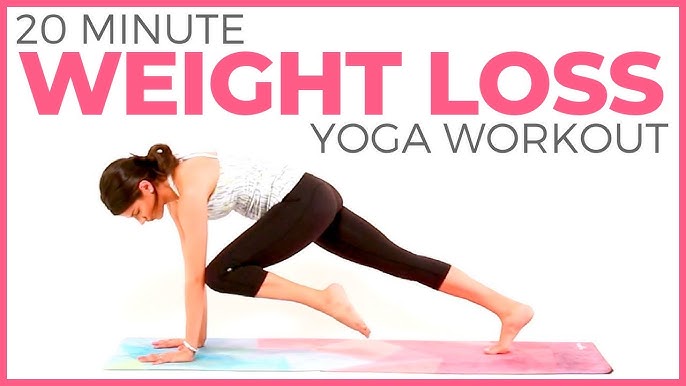Yoga is often praised for enhancing mindfulness and flexibility—but it can also be an effective tool for burning calories and losing weight. Incorporating targeted yoga practices into your routine helps create a dynamic, balanced program that supports lasting body transformation. Here’s how to build a weight loss–focused yoga practice that keeps you healthy, energized, and motivated.
1. Why Yoga Works for Weight Loss
Most people associate yoga with gentle stretching and deep breaths, but certain styles—like Vinyasa, Power Yoga, and Ashtanga—offer movement-based practice that significantly raises heart rate and metabolism. These styles combine strength, balance, and flexibility training, providing a calorie burn that complements aerobic workouts.
Beyond the physical benefits, yoga enhances body awareness and stress management. Lower stress levels mean reduced cortisol production—a hormone linked to weight gain around the belly. Moreover, focused breathing and meditation cultivate mindfulness, helping you become aware of hunger cues and possible emotional triggers for eating.
2. Best Yoga Styles for Shedding Pounds
- Vinyasa Flow: A flowing sequence of poses where each movement links to breath. Vinyasa is great for cardio, mobility, and strength. Expect 300–450 calories burned per hour depending on intensity.
- Power Yoga: A modern, intense version of Vinyasa with challenging strength elements. Fastpaced and athletic, Power Yoga burns even more calories while sculpting muscle.
- Ashtanga: A traditional, structured series of postures practiced in the same order each session. Ashtanga is demanding and builds strength and endurance alongside weight loss.
Less intense forms like Hatha or Yin Yoga can still aid weight loss by supporting recovery, improving flexibility, and calming the mind to prevent emotional snacking.
3. What a Weight‑Loss Yoga Session Looks Like
Warm‑up (5–10 minutes)
- Begin with gentle seated deep breathing (5 breaths) to center yourself.
- Move into Cat–Cow to wake up the spine and warm the body.
- Try Sun Salutation A (Surya Namaskar A) a few times to build rhythm and heat.
Core Flow (30–40 minutes)
- Dynamic Sun Salutations – Link movement and breath to engage the full body.
- Standing sequence – Include Warrior I & II, Triangle, Extended Side Angle, and Chair pose. Repeat 3–5 times to build stamina.
- Balancing poses – Tree pose and Half Moon strengthen your legs and core.
- Core boosters – Boat pose, Side plank, and Plank hold are excellent for abdominal strength.
Strength & Conditioning (10–15 minutes)
- Chaturanga Dandasana – Practice full or knees-down, building upper body support.
- Wild Thing / Flip Dog – Opens the chest and engages glutes.
- Bridge / Wheel – Deep spine extension and lower body activation.
Cool‑down & Stretch (10 minutes)
- Transition through seated forward fold and supine twists.
- End with a few minutes in Savasana (Corpse pose) for final relaxation.
4. Weekly Practice Plan for Results
Consistency is key. A balanced schedule might look like:
| Day | Focus |
|---|---|
| Monday | Power Yoga / Vinyasa (60 min) |
| Tuesday | Core-focused Flow (45 min) + walk |
| Wednesday | Restorative or gentle Hatha (45 min) |
| Thursday | Ashtanga/Power Yoga (60 min) |
| Friday | Core Flow or Vinyasa (45 min) |
| Saturday | Gentle Flow + outdoor cardio (30 min) |
| Sunday | Yin Yoga / Deep Stretch (60 min) |
By combining intense sessions with recovery and mobility work, you’ll avoid burnout and reduce injury risk—all while supporting fat loss and muscle tone.
5. Diet & Lifestyle as Yoga’s Foundation
While yoga supports calorie burn and stress relief, sustainable weight loss also depends on diet and lifestyle:
- Eat Whole Foods: Focus on lean proteins, vegetables, fruits, whole grains, nuts, seeds, and healthy fats.
- Stay Hydrated: Aim for 2–3 liters of water daily to support digestion, metabolism, and detox.
- Track Intake Wisely: Write down meals and emotions around eating to spot habits.
- Mindful Eating: Slow down, savor each bite, and eat without distractions.
- Manage Stress: Yoga, meditation, and leisure activities help cut cortisol levels.
Quality sleep—7–9 hours per night—is also essential for metabolism regulation and muscle recovery.
6. Tracking Progress and Staying Motivated
Weight loss and body tone take time. Here’s how to stay on track:
- Use non-scale measurements: Track waist, hip, and limb circumference.
- Monitor fitness progress: Can you hold Plank longer, deepen Warrior III, or sense improved balance?
- Record energy & mood: Better mood and stamina are signs of progress.
- Celebrate small wins: Reward yourself with a massage, yoga gear, or meditation app subscription—not food.
Join online yoga challenges or local groups for encouragement and fresh motivation.
7. Addressing Common Challenges
“I feel too stiff/inflexible.”
Yoga is for everyone. Begin with gentle poses and ramps up intensity gradually. Flexibility grows alongside strength.
“I need more cardio.”
Supplement yoga with weekend hikes, brisk walks, or cycling. Your body responds well to metabolic variety.
“I can’t commit daily.”
Start with three classes per week and build consistency. Even short 20-minute flows make a difference.
8. The Long‑Term Benefits
Yoga for weight loss is not just about shifting numbers on a scale. With regular practice, you gain:
- Better muscle tone and posture
- Increased energy and mental clarity
- A calmer mind less prone to stress eating
- A healthier metabolism and sustainable habits
- A sense of self-love and body confidence
Final Thoughts
Yoga offers a holistic, sustainable path to weight loss—uniting body, breath, and mind in a way that supports both transformation and wellness. When combined with healthy eating, thoughtful recovery, and consistent practice, it becomes more than a workout—it becomes a powerful lifestyle shift.
If you’re ready to tone up, burn calories, and feel stronger in your body and mind, this mindful fitness approach may be your best ally. Roll out your mat, follow your breath, open to the changes, and let the practice guide you toward a healthier, more energised you.








:max_bytes(150000):strip_icc()/GettyImages-1395504255-33d159af773f45039286966a35dfd76d.jpg?w=150&resize=150,150&ssl=1)

